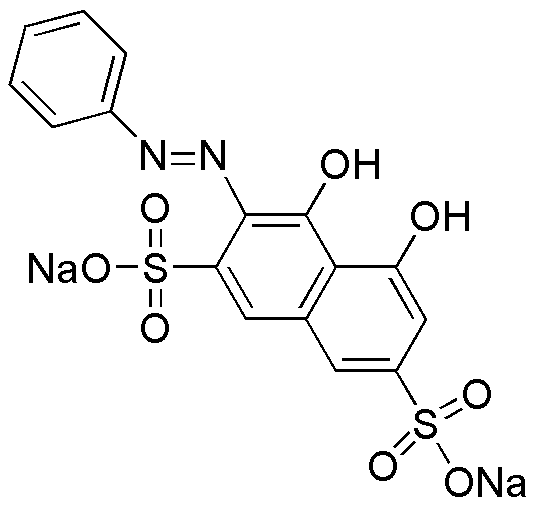Chromotrope 2R is widely utilized in research focused on:
- Biological Staining: This compound is commonly used as a dye in histology and microbiology to stain tissues and cells, enhancing visibility under a microscope.
- Analytical Chemistry: It serves as a reagent in various analytical techniques, including spectrophotometry, to quantify substances in complex mixtures.
- Textile Industry: Chromotrope 2R is employed as a colorant in textiles, providing vibrant colors while maintaining good fastness properties, making it suitable for various fabric types.
- Food Industry: This dye is used in food products to enhance appearance, ensuring compliance with safety regulations while providing an appealing look to consumers.
- Research and Development: In laboratories, it is utilized in the development of new dyes and pigments, contributing to advancements in materials science and color chemistry.
General Information
Properties
Safety and Regulations
Applications
Chromotrope 2R is widely utilized in research focused on:
- Biological Staining: This compound is commonly used as a dye in histology and microbiology to stain tissues and cells, enhancing visibility under a microscope.
- Analytical Chemistry: It serves as a reagent in various analytical techniques, including spectrophotometry, to quantify substances in complex mixtures.
- Textile Industry: Chromotrope 2R is employed as a colorant in textiles, providing vibrant colors while maintaining good fastness properties, making it suitable for various fabric types.
- Food Industry: This dye is used in food products to enhance appearance, ensuring compliance with safety regulations while providing an appealing look to consumers.
- Research and Development: In laboratories, it is utilized in the development of new dyes and pigments, contributing to advancements in materials science and color chemistry.
Documents
Safety Data Sheets (SDS)
The SDS provides comprehensive safety information on handling, storage, and disposal of the product.
Product Specification (PS)
The PS provides a comprehensive breakdown of the product’s properties, including chemical composition, physical state, purity, and storage requirements. It also details acceptable quality ranges and the product's intended applications.
Certificates of Analysis (COA)
Search for Certificates of Analysis (COA) by entering the products Lot Number. Lot and Batch Numbers can be found on a product’s label following the words ‘Lot’ or ‘Batch’.
*Catalog Number
*Lot Number
Certificates Of Origin (COO)
This COO confirms the country where the product was manufactured, and also details the materials and components used in it and whether it is derived from natural, synthetic, or other specific sources. This certificate may be required for customs, trade, and regulatory compliance.
*Catalog Number
*Lot Number
Safety Data Sheets (SDS)
The SDS provides comprehensive safety information on handling, storage, and disposal of the product.
DownloadProduct Specification (PS)
The PS provides a comprehensive breakdown of the product’s properties, including chemical composition, physical state, purity, and storage requirements. It also details acceptable quality ranges and the product's intended applications.
DownloadCertificates of Analysis (COA)
Search for Certificates of Analysis (COA) by entering the products Lot Number. Lot and Batch Numbers can be found on a product’s label following the words ‘Lot’ or ‘Batch’.
*Catalog Number
*Lot Number
Certificates Of Origin (COO)
This COO confirms the country where the product was manufactured, and also details the materials and components used in it and whether it is derived from natural, synthetic, or other specific sources. This certificate may be required for customs, trade, and regulatory compliance.


